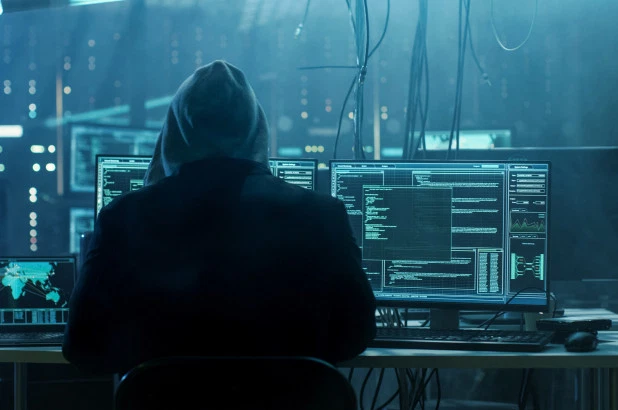theCyber — 2019 Update
1. A glance at the past
Back in 2018, I introduced theCyber with this first article. A second article provided more detailled information about the contracts and what needs to be solved in order to enter the small circle of people who made their way in.
After the introduction of the GateKeeperTwo detailled in this article, the readers were left with the challenge to try hacking the contract and save one of the 127 spots available.
Considering the number of people displaying Ethereum on their LinkedIn profile (Ethereum: 36 or Solidity: 26 as of today), I expected the limited amount of seats to fill up rather quickly.
Over 2700 people read my articles related to theCyber and I like to think that it helped a few Solidity hackers to get in. Between my first article and the last one in 2018, the number of entrants bumped up from 10 to 51 in a few days.

I got feedback form a few of them that it was intense and very interesting. More people did learn during the challenge.
How fast did the slots fill up? Where are we now? Is the difficulty of theCyber too high?
2. Solidity
Solidity is a Smart Contract programming language that has been created for Ethereum.

While Solidity is not the only language available to program Smart Contracts on the Ethereum Blockchain, this is by far the most popular.
It aims at being simple to read and write while offering good security. You will find many discussions online arguing one or the other of those points.
In 2019, thanks to WASM, it is now possible to use a language such as Rust to program on Ethereum (https://ethereum.org/rust/). While Rust offers garantees far superior to Solidity, I really doubt in a future where most Lawyers will be able to fluently read Rust code, or probably even Solidity.
Solidity remains a nice solution to get into the world of Smart Contract and can get your far if used properly.
3. What became to theCyber?
Feel free to check out the previous articles, you will find all addresses of the contracts. For now, let’s have a look at the GateKeeperTwo. The ENS registration makes it easy to find again: here.
The first thing we can see is that not much happened since… more than 600 days and the last attempts did not look very successful :) !

The second information we can extract thanks to Etherscan is that 109 entrants secured their slots so far.

4. Where are the solidity hackers?
Despite of a growing amount of people claiming and probably even using Solidity, the number of entrants in theCyber did not really explode. That can be due to the limited visibility of theCyber, let’s change that together and share about it.
Currently, the contract is still waiting for the max number of entrants to be reached for theCyber to be founded as we can see in the code below.
function assignAll() public returns (bool) {
// The contract must still be active in order to assign new members.
require(active_);
// Require a large transaction so that members are added in bulk.
require(msg.gas > 7000000);
// All entrants must be registered in order to assign new members.
require(entrants.length >= MAXENTRANTS_);
//...5. Show you skills
It seems easier to display skills than to proove it :)
Once you secure a slot in theCyber, you will be able to proove it onchain and this is irrevocable. This shows a great application of Blockchain when it comes to keeping immutable and unforgeable records.
6. Benefits of entering theCyber
While this is a great challenge to confirm or sharpen your skills, entering theCyber showed already back in 2018 that you could form a group on chain and let this group of anonymous decide for the future development of a given onchain entity.
This is now worded as OnChain Governance and becomes a hot topic with new projects such as Polkadot and Substrate to demonstrate what can be done while project such as Ethereum and Bitcoin still struggle at coordinating devs and users to make decision about the future of the projects.
7. Further reading
The following topics may or not be directly related to Blockchain projects but you may find them interesting readings:
-
Ethereum ERC1238: Non-transferrable tokens (Badges) https://github.com/ethereum/EIPs/issues/1238
-
Parity Badge Registry: https://wiki.parity.io/Badge-Registry
-
Mozilla Badgr (former Backpack): https://badgr.com/ a project that would have greatly benefited from the immutability of the Blockchain… I used to have many badges in my 'Backpack', they are now all gone :)
This site is best viewed using the Brave browser.
Not only it will help you block most trackers, keep you safer on the internet but it also allows you supporting websites such as this one without having to spend a dime.
Using Brave allows me bringing this content to you, without any ad, subscription and other annoyance (I am looking at you Medium…). Using Brave gives you the opportunity to show your appreciation for that in a few clicks!
You can read more about Brave in this article.